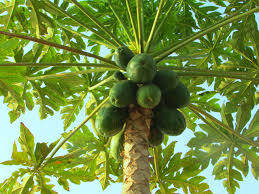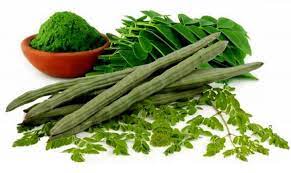
Potato, or as it is called the “bread of the poor”, is a traditional product and the fourth world's largest consumption culture after rice, wheat, and maize. Potato contains vitamin B6 (32%), starch (26%), copper (22%), vitamin C (22%), magnesium (19%), phosphorus (17%), fiber (15%), pantothenic acid (13%), and other ingredients.
There are also over one hundred and eighty (180) species of wild potatoes, though they are inedible due to their extremely bitter taste. Potatoes have a natural resistance to pests, diseases, and climatic conditions.
Potatoes were first cultivated around 200 B.C. by the Inca Indians in Peru. At that time, potatoes served a wide variety of uses, such as healing broken bones and measuring time. Nearly 4,000 varieties can be found in the Andes.
The Spanish brought potatoes to Europe in the 16th century. European consumers were reluctant to adopt the potato. However, due to the sheer practicality of the potato—adaptability, generally plentiful crops and relatively long shelf life, combined with the nutritional value—it was soon widely accepted and consumed.
Potato is a plant of great importance for the human food, the food industry, and the animal husbandry. Potato serves as a raw material for the industry in the production of many valuable products like alcohol, starch, dextrin’s, glucose, gum, and many other products (special inks, artificial silk, perfumes, plastics, etc.).
Fresh and chilled potatoes are the two main categories in the global potato market. Fresh potatoes are used for daily consumption, whereas chilled potatoes are exported or imported and used in the food processing industry. Even in traditionally non-potato-consuming countries, potatoes have become popular due to their long shelf life. In the processed food industry, where processed products constitute the bulk of potato consumption, the demand for fresh potatoes has skyrocketed worldwide.
The global processed potato is valued at $76.8 billion during 2020 and is forecast to register a growth rate at a compound annual growth rate (CAGR) of four point zero five percent (4.05%) between 2020 and 2026.
A rise in consumer spending, increasing influence of food delivery services, surge in the number of fast food restaurants and rpaid urbanization are some of the factors driving the demand for fast food which in turn stimulates the growth in potato demand.
Nigeria is one of the largest producers of potatoes in Africa. The potato was introduced to the country in the 19th century by Christian missionaries and is largely cultivated in the central region of the country in Plateau State.
In Nigeria, potato is consumed in over five hundred thousand (500,000) household weekly and the country produces about eight hundred and forty-three thousand (843,000) tons per annum.
Potato is planted in Benue, Kogi, Plateau (Bui), Taraba (Mambilla Plateau) and Borno in large quantities. Others are Zamfara, Bauchi, Katsina, Gombe, Sokoto, Jigawa, Kano and Kebbi although most of them is through irrigation.
Some types of potatoes in Nigeria
Russet – These are the classic potatoes. They are ideal for baking and are also good fried and mashed.
Fingerling – These are finger-shaped and small and stubby. They naturally grow narrow and small.
Red – They have a waxy texture, which is why their flesh stays firm throughout the entire cooking process. They have thin yet vibrant red skins.
White – They hold their shape well even after cooking. They make a great addition to salads as their delicate and thin skins add the right amount of texture.
Yellow – They have golden skin and yellow to golden flesh. Grilling them gives them a crispy skin that enhances the dense flesh.
Purple – They have moist and firm flesh and add a vibrant color to salads. The purple color of this type of potatoes is preserved best by microwaving.
Land preparation: Plough the land and loosen them up for aeration and water penetration. Use glyphosate with paraqat on the land and allow it for two (2) weeks before planting in other to suppress the effect of the drugs.
Make good ridges or beds for planting it is advisable to cultivate sweet potato on bed for proper tuberization. Give 1m spacing between the field an any adjourning farmland to prevent rodents feeding on the tubers.
It can grow in a wide variety of land, however for optimum yield use sandy loam soil rich in organic matter. Whereby the land is short of nutrient you can add manure when preparing the land. A PH of five point five to six point five (5.5-6.5) is ideal for optimum growth.
Planting: Potato is planted from stem and vines cuttings from the parent plant. The vine cutting should be between twenty-five to thirty (20-30) cm in length with about two to three (2-3) nodes in each vine.
Sow the vine below the soil four to six (4-6) cm deep while leaving part of it above the soil. Spacing twenty-five to thirty (20-30) cm on ridges; sixty to seventy-five (60-75) cm apart. Depending on the spacing distance you can plant up twenty-seven thousand to fifty thousand (27,000-50,000) vine cuttings in a hectare. And eleven thousand (11,000) vine cuttings in an acre.
Sweet potato growing can be done in sack bag, container and bucket. It makes movement around the farm easy and for proper management.
Weeding and Fertilizer Application: Weeding should be done very early after planting so that the sweet potato young plants will not have any competitor, maybe two (2) weeks after planting then another two (2) weeks after. But as the plant crawls and cover the soil weed will not be able to germinate well.
Potato farming can be done purely on organic manure, however if you must use inorganic fertilizer then use NPK 10:10:20.
Irrigation and Mulching: Mulch the young plant after germination in other to conserve moisture and allow for proper root formation. It can tolerate drought for sometimes but when it becomes too long maybe up to 6 weeks their yield will reduce.
Yield: Sweet potato matures between three to four (3-4) months; the white variety matures fast within three (3) months. While the popular variety matures within four (4) months. Harvest sweet potato when the leaves turn yellow in colour. Use spade, hand fork, pick axe to dig the tubers out from the soil and be careful not to damage the tubers because it won’t stay long. A hectare will give between six to twenty (6-20) tons.
After harvesting potatoes keep them for about two (2) weeks to cure before storing in a cold dry place. However it shouldn’t be too long in other not to tie down your money unnecessarily.
Nigeria has comparative in the cultivation and production of potatoes, hence setting up a potatoes farm in Nigeria would enable the entrepreneur to produce raw materials for local industries and create employment.






















